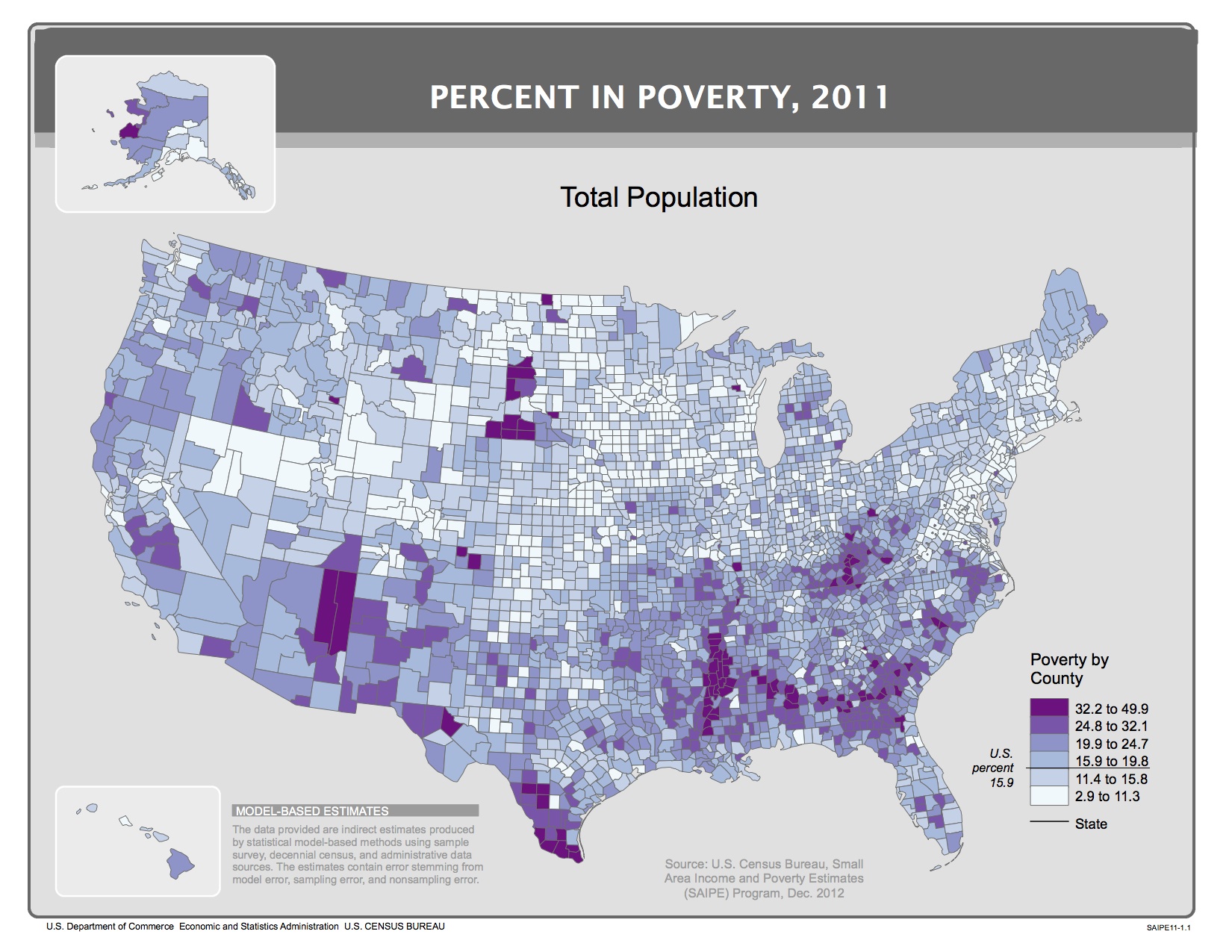December 26th, 2012
New Census Bureau Estimates Show Poverty Dropped in 31 Alabama Counties
According to the Small Area Income and Poverty Estimates (SAIPE) data earlier this month released by the US Census Bureau, poverty in Alabama only increased .2 percent from 18.9 percent in 2010 to 19.1 percent in 2011. Nationwide poverty was up .6 percent from 15.3 percent in 2010 to 15.9 percent in 2011.
Alabama and Kentucky tied as the sixth poorest states in the country. Mississippi was the nation’s poorest state in 2011, followed by New Mexico, Louisiana, Arkansas and Georgia. The poverty threshold for a family of four was $22,811.
Child poverty in Alabama also increased by .2 percent, from 27.4 percent in 2010 to 27.6 percent in 2011. Nationally child poverty grew by .9 percent, from 21.6 percent in 2010 to 22.5 percent in 2011.
“While we can take solace that poverty didn’t increase significantly, we still have to face the facts that nearly 1 in 5 of our neighbors – and more than 1 in 4 of our children – live in poverty,” said Kristina Scott, executive director of the Alabama Poverty Project.
Poverty dropped in 31 counties. Perry County, located in the Black Belt, had the steepest drop from 2010 to 2011, at 6.5 percent. Just to the west, Sumter County had the biggest gain from 2010 to 2011, at 7.8 percent.
Child poverty fell in 34 counties. The biggest one-year drop in child poverty was in Southwest Alabama’s Monroe County at 8.3 percent. Geneva County, in the Wiregrass region, saw the biggest one-year spike in child poverty at 10.7 percent.
Alabama’s median household income grew modestly, from $40,538 in 2010 to $41,427 in 2011. Thirty counties saw increases. The biggest gainer was the River Region’s Elmore County, with a spike of $3,853 from 2010 to 2011. The biggest loss came in neighboring Autauga County, where median income fell $4,186 during the same period.
Read the detailed chart here.
“There are some points of light in the data. Alabama’s communities and economic development team have worked hard to bring good-paying jobs to the state. Let’s build on those successes by strategically investing in the educational pipeline so that Alabama produces workers qualified for high-skill, high-wage jobs,” said Scott.
“Alabama consistently produces college football championship teams. If we can do that, surely we can create jobs and opportunities which support economic security for our communities,” said Scott.
